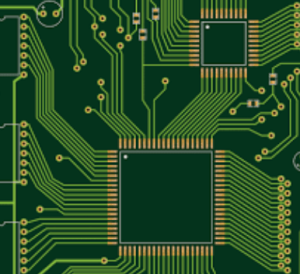
PCB (Printed Circuit Board) rework is a critical process in electronics manufacturing and maintenance, involving the correction of defects, replacement of faulty components, or design modifications post-assembly. As electronic devices become more complex, the need for precise and efficient rework techniques has grown, especially with the prevalence of surface-mount technology (SMT) and miniaturized components.
Reasons for PCB Rework
Rework is necessitated by several factors:
Manufacturing Defects: Incorrect component placement, solder bridges, or insufficient solder.
Component Failure: Identifying and replacing malfunctioning parts during testing or field use.
Design Changes: Upgrading firmware, adding features, or addressing design flaws.
Customization: Tailoring PCBs for specific applications post-production.
Tools and Equipment
Effective rework requires specialized tools:
Rework Stations: Advanced systems with hot air guns, precise temperature control, and vacuum tools for component handling.
Soldering Irons: Fine-tipped for precision work, often with ESD protection.
Hot Air Guns/Nozzles: For SMDs and BGAs, enabling localized heating.
BGA Rework Systems: Equipped with infrared or convection heating and vision systems for alignment.
Desoldering Tools: Solder wicks, vacuum pumps, and desoldering tweezers.
Inspection Equipment: Microscopes, magnifiers, and X-ray machines for hidden joints (e.g., BGAs).
Cleaning Supplies: Isopropyl alcohol, brushes, and flux removers.
ESD-Safe Workspaces: Anti-static mats and wrist straps to prevent static damage.
Step-by-Step Rework Process
Diagnosis and Preparation
Use testing equipment (multimeters, oscilloscopes) to identify faulty components.
Document the issue and plan the rework procedure.
Component Removal
SMDs: Apply flux, heat with a hot air gun (300–400°C), and lift with tweezers.
Through-Hole Components: Desolder using a soldering iron and solder wick or vacuum pump.
BGAs: Use a rework station to preheat the PCB, then apply focused heat to melt solder balls. A vacuum tool lifts the component.
Site Preparation
Clean pads with solder wick and isopropyl alcohol. Repair lifted pads using copper tape or epoxy.
Apply fresh flux to enhance solder flow and prevent oxidation.
Component Replacement
SMDs: Position the new component with tweezers; reflow using hot air.
BGAs: Align using optical systems, apply solder paste, and reflow in a controlled thermal profile.
Through-Hole: Insert the component, solder manually, and trim leads.
Inspection and Testing
Visual inspection for solder quality.
X-ray or automated optical inspection (AOI) for BGAs.
Electrical testing to validate functionality.
Challenges and Best Practices
Thermal Management: Avoid overheating nearby components by using localized heating and thermal shields.
ESD Protection: Ground all equipment and work in an ESD-safe environment.
Alignment Precision: Use stencils and alignment tools for BGAs and fine-pitch components.
Lead-Free Solder: Adjust temperature settings for higher melting points (217–227°C vs. 183°C for leaded solder).
Conformal Coating: Remove coating chemically or mechanically before rework and reapply afterward.
Advanced Techniques
Trace Repairs: Use jumper wires or conductive ink to fix broken traces.
Via Repairs: Fill damaged vias with conductive epoxy or install new ones.
Pad Restoration: Rebuild pads with copper foil and adhesive for SMDs.
Conclusion
PCB rework is a blend of art and science, requiring technical expertise, precision tools, and adherence to best practices. As electronics evolve, rework techniques must adapt to handle smaller components and advanced packaging like BGAs. Proper training, documentation, and quality control ensure successful rework, extending the life and functionality of electronic assemblies. By mastering these processes, technicians can address defects efficiently, reduce waste, and maintain high reliability in electronic products.
- Everything You Need To Know About Limit Switch - May 21, 2025
- Everthing You Should Know About Rheostat - May 20, 2025
- Everything You Need To Know About Reversing Contactor - May 19, 2025






